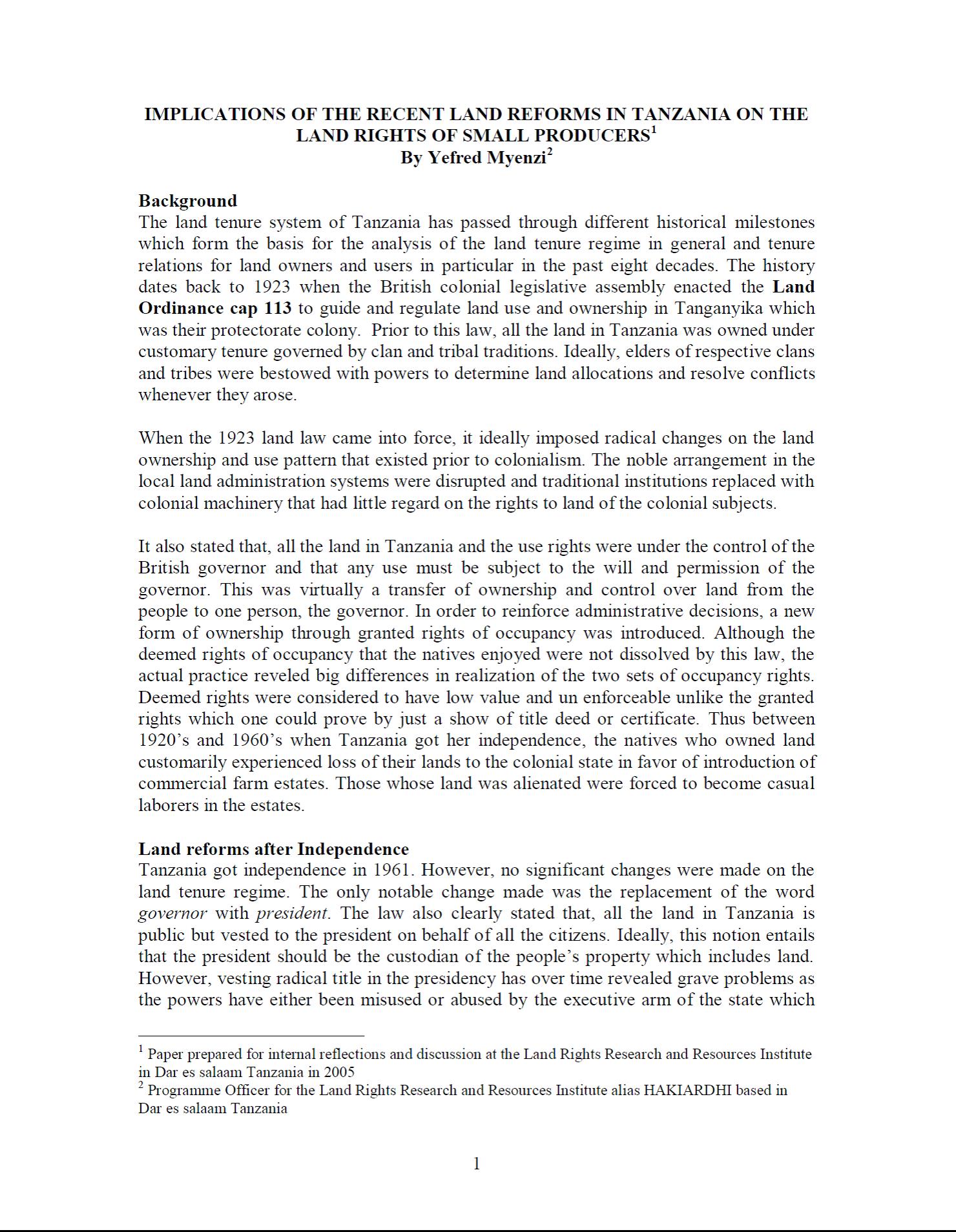Resource information
The land tenure system of Tanzania has passed through different historical milestones which form the basis for the analysis of the land tenure regime in general and tenure relations for land owners and users in particular in the past eight decades. The history dates back to 1923 when the British colonial legislative assembly enacted the Land Ordinance cap 113 to guide and regulate land use and ownership in Tanganyika which was their protectorate colony. Prior to this law, all the land in Tanzania was owned under customary tenure governed by clan and tribal traditions. Ideally, elders of respective clans and tribes were bestowed with powers to determine land allocations and resolve conflicts whenever they arose.
When the 1923 land law came into force, it ideally imposed radical changes on the land ownership and use pattern that existed prior to colonialism. The noble arrangement in the local land administration systems were disrupted and traditional institutions replaced with colonial machinery that had little regard on the rights to land of the colonial subjects.
It also stated that, all the land in Tanzania and the use rights were under the control of the British governor and that any use must be subject to the will and permission of the governor. This was virtually a transfer of ownership and control over land from the people to one person, the governor. In order to reinforce administrative decisions, a new form of ownership through granted rights of occupancy was introduced. Although the deemed rights of occupancy that the natives enjoyed were not dissolved by this law, the actual practice reveled big differences in realization of the two sets of occupancy rights. Deemed rights were considered to have low value and un enforceable unlike the granted rights which one could prove by just a show of title deed or certificate. Thus between 1920’s and 1960’s when Tanzania got her independence, the natives who owned land customarily experienced loss of their lands to the colonial state in favor of introduction of commercial farm estates. Those whose land was alienated were forced to become casual laborers in the estates.


